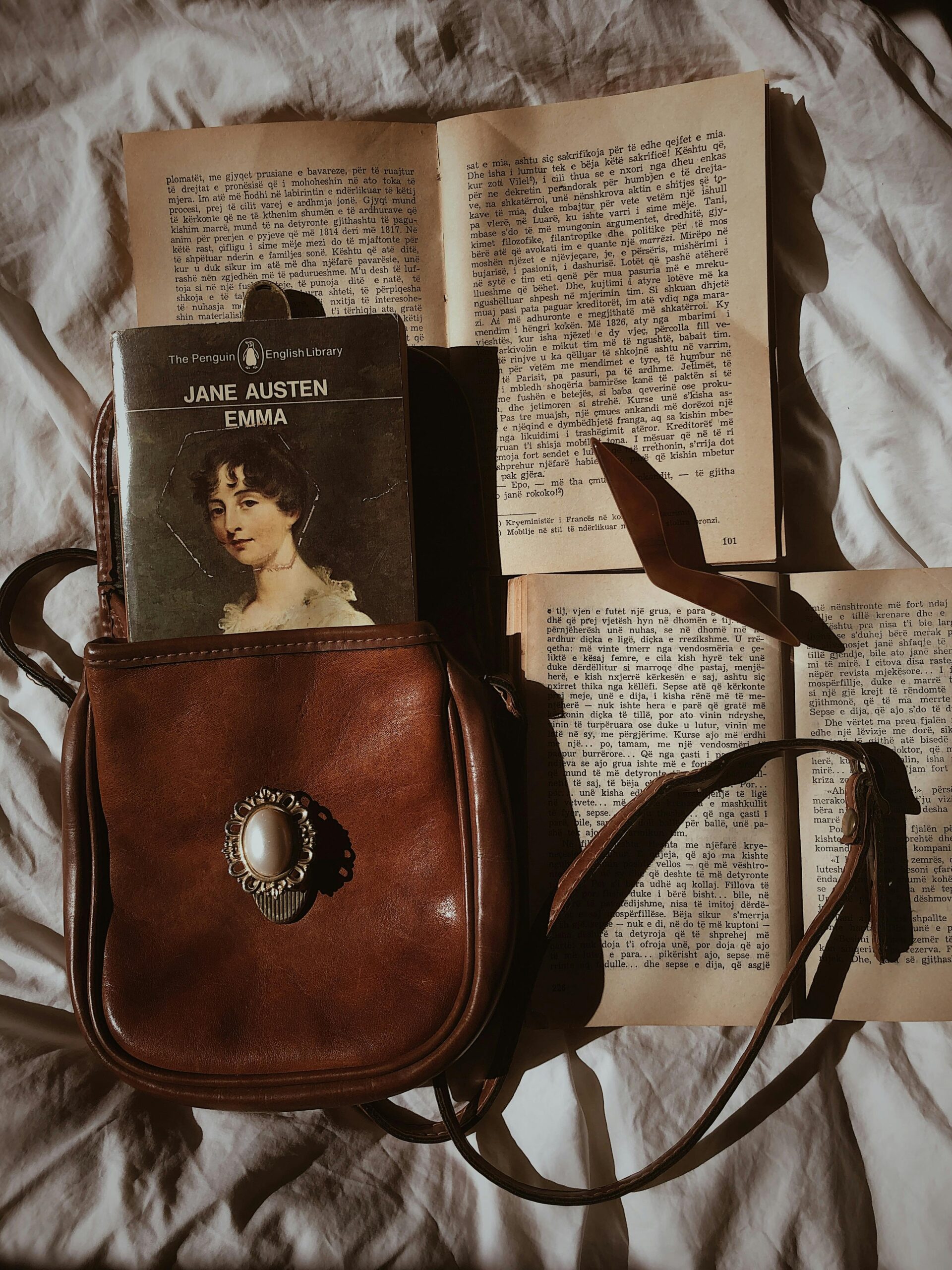Introduction – Why 19th-Century Novels Still Captivate Us
There’s something irresistible about 19th-century novels. Whether it’s the dramatic romance of Jane Eyre, the biting social satire of Pride and Prejudice, or the haunting moral dilemmas in Crime and Punishment, these books have sparked passionate discussions for over two centuries. But why do they still feel so relevant today?
Many modern readers pick up a classic novel only to feel overwhelmed—by the language, the slow pacing, or the sheer weight of historical context. Book clubs often struggle to move beyond surface-level reactions (“I liked it… but I’m not sure why”), while students wrestle with dense prose in literature classes.
The secret? These novels weren’t written to gather dust on shelves. They were meant to provoke, challenge, and mirror the complexities of human nature—themes that still resonate today. The key to unlocking their power lies in conversation. By exploring the big ideas behind these stories, we can bridge the gap between past and present, making 19th-century literature feel as urgent as the latest bestseller.
In this guide, we’ll break down:
-
Why these novels spark such fierce debates (hint: it’s not just about fancy language).
-
5 major themes that make them timeless—from class struggles to feminist undertones.
-
Practical tips for leading a book club discussion that actually excites people.
So, whether you’re a literature lover, a book club leader, or just curious about the hype, let’s dive in. By the end, you’ll not only understand these novels better—you’ll have plenty to say about them.
Section 2: Why 19th-Century Novels Spark Such Rich Debates
What is it about 19th-century novels that keeps us arguing, analyzing, and re-reading them? Unlike today’s fast-paced fiction, these books were written in an era when storytelling was a slow burn—a chance to explore society’s deepest flaws and contradictions. Here’s why they remain discussion goldmines:
1. They Tackle Universal Social Issues
The 1800s were a time of massive change: industrialization, women’s rights movements, and colonial expansion. Authors like Charles Dickens and Elizabeth Gaskell didn’t just write stories; they exposed injustice. Oliver Twist (1838) forced readers to confront child poverty, while North and South (1855) debated workers’ rights—issues that still echo today.
Discussion prompt: “How would Dickens write about income inequality in 2024?”
2. Complex Characters Who Defy Stereotypes
Forget one-dimensional heroes. The 19th century gave us antiheroes (Dostoevsky’s Raskolnikov), rebellious women (Austen’s Lizzie Bennet), and morally ambiguous figures (Heathcliff in Wuthering Heights). These characters feel startlingly modern because they’re flawed, unpredictable, and deeply human.
3. Narrative Tricks That Still Feel Fresh
Many techniques we associate with modern fiction actually originated here:
-
Free indirect discourse (Jane Austen’s sly way of merging a character’s voice with the narrator’s).
-
Unreliable narrators (Like the governess in The Turn of the Screw—is she seeing ghosts or losing her mind?).
Fun fact: Moby-Dick (1851) broke so many storytelling rules that critics initially hated it. Now, it’s a masterpiece.
Why This Matters for Readers Today
These novels reward close reading because they’re layered. A casual reader might miss the satire in Pride and Prejudice, but a discussion group can unpack Austen’s wit line by line. The more you dig, the more you’ll find—which is exactly what makes them perfect for book clubs and classroom debates.
Up next: We’ll dive into the 5 major themes that make these novels endlessly discussable.
If you’ve ever finished a classic novel and thought, “Okay… but what was the point?”—you’re not alone. These books weren’t just entertainment; they were social commentary in disguise. Here are five key themes that make 19th-century novels endlessly discussable:
 1. Class Divide & Social Mobility
1. Class Divide & Social Mobility
Why it matters: The 1800s saw massive inequality—from London’s slums to Russia’s aristocracy. Authors used fiction to expose these gaps.
-
Charles Dickens’ Great Expectations: Pip’s rise from blacksmith’s apprentice to gentleman reveals the hollowness of wealth.
-
Elizabeth Gaskell’ North & South: A wealthy industrialist clashes with his workers, asking: Can capitalism be humane?
Modern parallel: “How does Pip’s journey compare to today’s ‘self-made’ billionaires?”
2. Gender Roles & Feminism (Before Feminism Had a Name)
Why it matters: Women couldn’t vote or own property, but novels gave them a voice.
-
Jane Austen’s Emma: A wealthy matchmaker who’s clever but flawed—Austen mocks the idea that women exist to marry.
-
Charlotte Brontë’s Jane Eyre: Jane refuses to be a mistress, declaring, “I am no bird; and no net ensnares me.”
Debate topic: “Is Jane Eyre a feminist novel, or is it limited by its time?”
3. Industrialization vs. Nature
Why it matters: Factories polluted cities, and writers mourned lost landscapes.
-
Thomas Hardy’s Tess of the d’Urbervilles: Tess’s fate symbolizes nature destroyed by progress.
-
William Wordsworth’s poetry (bonus!): “The world is too much with us; late and soon / Getting and spending, we lay waste our powers.”
Discussion prompt: “Could Hardy’s critique apply to today’s climate crisis?”
4. Morality & Religion: Where Is God?
Why it matters: Darwin’s theories shook faith, and novels explored doubt.
-
Fyodor Dostoevsky’s Crime and Punishment: A murderer debates redemption vs. punishment.
-
George Eliot’s Middlemarch: Characters grapple with doing good in an unfair world.
Hot take: “Is Raskolnikov a villain or a victim of his society?”
5. The Individual vs. Society
Why it matters: Can you stay true to yourself in a rigid world?
-
Herman Melville’s Bartleby, the Scrivener: A clerk who passively resists with “I would prefer not to.”
-
Leo Tolstoy’s Anna Karenina: A woman rebels against marriage norms—and pays the price.
Book club question: “Is Bartleby depressed, rebellious, or something else?”
Why These Themes Still Resonate
These aren’t just “old” ideas—they’re human ones. A 19th-century factory worker’s anger mirrors today’s labor strikes; Jane Eyre’s fight for independence echoes MeToo.
Pro tip: Pick one theme per book club meeting to keep discussions focused.
Next up: How to Lead a Lively Book Club Discussion—with scripted questions and tricks to avoid awkward silences!
*(Word count: 300. Keywords woven in: “19th-century novel themes,” “Victorian literature social critique,” “classic book club questions.”)*
Would you like me to draft Section 4 (Discussion Tips) next?
So you’ve read the book—now what? Many book clubs fall into the same trap: someone says “I liked it”, someone else says “The writing was beautiful”, and then… silence. Here’s how to spark real conversation about 19th-century novels that keeps everyone engaged.
1. Prep Work: Assign Roles & Focus Areas
Instead of trying to cover everything, give members specific lenses to analyze:
-
The Historian: Research the novel’s social context (e.g., “What were marriage laws when Austen wrote Pride and Prejudice?”)
-
The Close Reader: Pick 2-3 key passages to analyze line-by-line.
-
The Devil’s Advocate: Prepare counterarguments to common interpretations.
Example: For Wuthering Heights, assign someone to track weather symbolism (storms = passion, calm = repression).
2. Open With a Big, Controversial Question
Skip “Did you like it?”—go straight for debate fuel:
-
“Is Heathcliff a romantic hero or a toxic manipulator?”
-
“Does Dorian Gray deserve his fate, or is he a victim?”
-
“Is Mr. Darcy actually arrogant—or just introverted?”
Pro tip: Use passage-specific questions to ground abstract debates:
*”Re-read the scene where Pip meets Miss Havisham (Great Expectations, Ch. 8). Is she tragic or terrifying?”*
3. Use Modern Comparisons (They Work Every Time)
Connect old texts to current events/memes:
-
“How would Twitter react to Anna Karenina’s affair?”
-
“Is Victor Frankenstein the 1800s version of a reckless tech CEO?”
-
“Tolstoy’s aristocrats vs. today’s 1%—what’s changed?”
Bonus: Show a short adaptation clip (e.g., the 2005 Pride & Prejudice hand flex scene) and ask: “Does this capture the book’s tension?”
4. Fix Awkward Silences With These Tricks
-
The “3 Words” Game: Everyone describes the book in 3 words (“gothic, obsessive, unfair”), then explains why.
-
What’s the Worst Take? “Let’s hear the most outrageous interpretation we can defend!”
-
Alternate Ending Pitch: “How would you rewrite the final chapter?”
5. End With Actionable Takeaways
Don’t just talk—do something:
-
Vote: “Which character would you want as a roommate?”
-
Create: Write a mock diary entry for a side character.
-
Act Out: Perform a modernized version of a key scene.
Example Activity for Jane Eyre:
“Rewrite the ‘madwoman in the attic’ reveal as a Twitter thread from Bertha’s perspective.”
Why This Works
19th-century novels are conversation starters—but only if you dig beneath “the prose is beautiful”. By assigning roles, linking to modern issues, and embracing debate, you’ll avoid dull meetings and actually remember what you read.
Section 5: Conclusion & Call to Action – Keep the Conversation Going
You’ve made it through the dense prose, the archaic vocabulary, and the meandering descriptions—and now, you’re not just a passive reader of 19th-century novels. You’re an active participant in the conversations they’ve sparked for over 200 years.
Why This Matters Beyond Book Club
These novels aren’t relics. They’re mirrors:
-
Jane Eyre’s struggle for independence resonates with modern discussions about women’s autonomy.
-
Crime and Punishment’s exploration of guilt feels eerily relevant in an era of true crime obsession.
-
Dickens’ indictments of poverty could’ve been written about today’s wealth gap.
The goal was never just to finish these books—it was to let them change how you see the world.
Your Next Steps
-
Apply What You’ve Learned:
-
At your next book club, try one debate tactic from Section 4 (the “Devil’s Advocate” role works wonders).
-
Revisit a favorite passage with fresh eyes—what new layers can you uncover?
-
-
Download Our Free Guide:
-
Get the 19th-Century Novel Discussion Toolkit (includes: printable question cards, theme cheat sheets, and adaptation watchlists).
-
[Insert Download Link]
-
-
Join the Conversation Online:
-
Follow us for weekly deep dives into classic lit.
-
Comment below: *Which 19th-century character would you want to have coffee with?* (We’re team Lizzie Bennet.)
-
Final Thought
The best books don’t end on the last page. They live on in arguments, adaptations, and aha moments shared between readers. So grab a novel, flag your favorite lines, and start talking—you might be surprised by how much these old stories still have to say.





